This article introduces to you what is radial-gradient() in CSS? Use of radial-gradient(). It has certain reference value. Friends in need can refer to it. I hope it will be helpful to you.
In CSS we can achieve a smooth transition between two or more specified colors by setting gradients. And because gradients are generated by the browser, elements with gradient effects look better when zoomed in. [Related video recommendation: css3 tutorial]
Two types of gradients can be defined in css:
1. Linear Gradients - to Down/up/left/right/diagonal directions
2. Radial gradients (Radial Gradients) - defined by their centers
We mentioned in the previous article [linear- in css] What can gradient() do? The use of the linear-gradient() attribute of linear gradient has been introduced in [detailed explanation of linear-gradient()] and will not be introduced here. Let's take a detailed look at radial gradient--radial-gradient() attribute usage.
In a radial gradient, instead of the colors fading smoothly from one side of the gradient box to the other as in a linear gradient, they instead emerge from a single point and smoothly outward in a circular or elliptical shape. expanded.
radial-gradient() specifies a radial gradient by indicating the size and shape of the center of the gradient (where a 0% ellipse will be) and the end shape (a 100% ellipse). The color stops are given as a list, the same as linear-gradient(). Starting at the center of the gradient and progressing toward (and possibly beyond) the end shape, uniformly scaled concentric ellipses are drawn and colored according to the specified color stop.
The basic syntax of the radial-gradient() attribute
The radial gradient syntax is:
radial-gradient( [ <ending-shape> || <size> ] [ at <position> ] ,<color-stop-list> )
For example:
background: radial-gradient(5em circle at top left, yellow, blue)
defines a 5em wide circular radial gradient with its center in the upper left corner.

The parameter analysis is as follows:
##
When defined as a gradient for circles and ellipses, it accepts the following keywords as its
closest -side:The end shape is sized so that it fits exactly into the side gradient box closest to the center of the gradient. If the shape is an oval, it intersects exactly the nearest side in each dimension.
farthest-side: Same as closest-side, except the size of the final shape is based on the farthest side.
closest-corner: The end shape is sized so that the corner gradient box it crosses is closest to the center of the gradient. If the shape is an ellipse, the end shape is given with the same aspect ratio as if the nearest side was specified.
farthest-corner: Same as closest-corner, except the size of the final shape is based on the farthest corner. If the shape is an ellipse, the end shape's aspect ratio is the same as if the farthest side was specified.
##Note:1. If
Percentages are not allowed here; they can only be used to specify the size of elliptical gradients, not circular gradients.
2. If
Explicitly give the size of the ellipse. The first value represents the horizontal radius and the second value represents the vertical radius. The percentage value is relative to the corresponding dimension of the gradient box. Negative values are invalid.
Radial gradient example
Example 1: Different ways to specify a basic radial gradientradial-gradient(yellow, green);
radial-gradient(ellipse at center, yellow 0%, green 100%);
radial-gradient(farthest-corner at 50% 50%, yellow, green);
radial-gradient(circle, yellow, green);

radial-gradient(red, yellow, green);

示例二:显示了一个以盒子以外的某点为中心的渐变
radial-gradient(farthest-side at left bottom, red, yellow 50px, green);

示例三:设置
radial-gradient(closest-side at 20px 30px, red, yellow, green); radial-gradient(20px 30px at 20px 30px, red, yellow, green);

radial-gradient(closest-side circle at 20px 30px, red, yellow, green); radial-gradient(20px 20px at 20px 30px, red, yellow, green);

The above is the detailed content of What is radial-gradient() in css? Use of radial-gradient(). For more information, please follow other related articles on the PHP Chinese website!
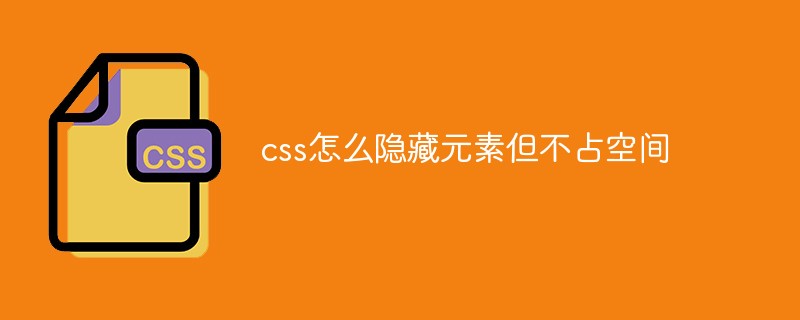 css怎么隐藏元素但不占空间Jun 01, 2022 pm 07:15 PM
css怎么隐藏元素但不占空间Jun 01, 2022 pm 07:15 PM两种方法:1、利用display属性,只需给元素添加“display:none;”样式即可。2、利用position和top属性设置元素绝对定位来隐藏元素,只需给元素添加“position:absolute;top:-9999px;”样式。
 原来利用纯CSS也能实现文字轮播与图片轮播!Jun 10, 2022 pm 01:00 PM
原来利用纯CSS也能实现文字轮播与图片轮播!Jun 10, 2022 pm 01:00 PM怎么制作文字轮播与图片轮播?大家第一想到的是不是利用js,其实利用纯CSS也能实现文字轮播与图片轮播,下面来看看实现方法,希望对大家有所帮助!
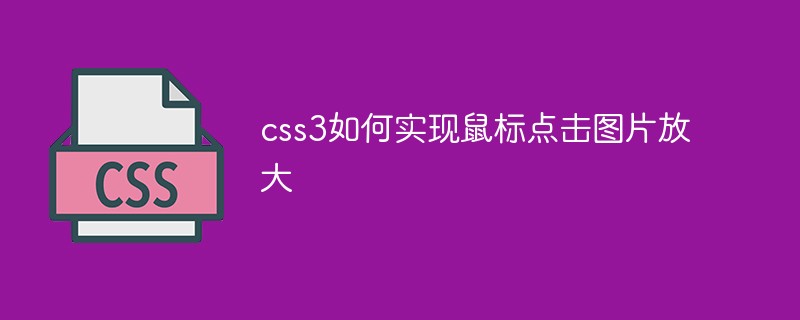 css3如何实现鼠标点击图片放大Apr 25, 2022 pm 04:52 PM
css3如何实现鼠标点击图片放大Apr 25, 2022 pm 04:52 PM实现方法:1、使用“:active”选择器选中鼠标点击图片的状态;2、使用transform属性和scale()函数实现图片放大效果,语法“img:active {transform: scale(x轴放大倍数,y轴放大倍数);}”。
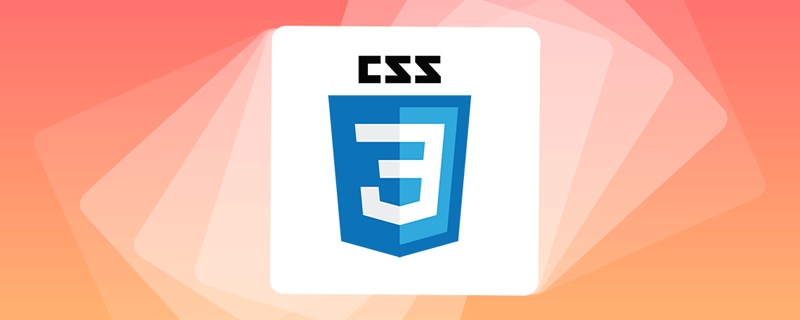 css3什么是自适应布局Jun 02, 2022 pm 12:05 PM
css3什么是自适应布局Jun 02, 2022 pm 12:05 PM自适应布局又称“响应式布局”,是指可以自动识别屏幕宽度、并做出相应调整的网页布局;这样的网页能够兼容多个不同的终端,而不是为每个终端做一个特定的版本。自适应布局是为解决移动端浏览网页而诞生的,能够为使用不同终端的用户提供很好的用户体验。
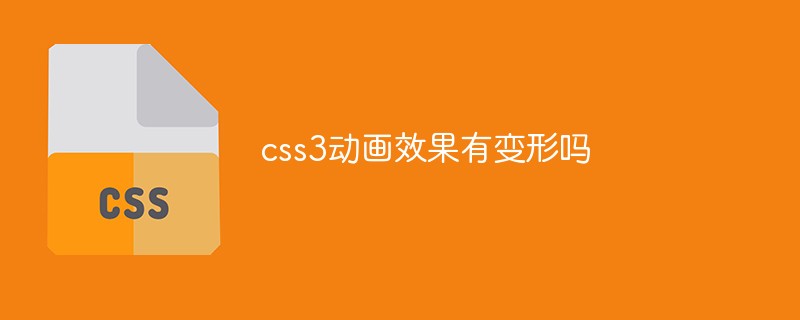 css3动画效果有变形吗Apr 28, 2022 pm 02:20 PM
css3动画效果有变形吗Apr 28, 2022 pm 02:20 PMcss3中的动画效果有变形;可以利用“animation:动画属性 @keyframes ..{..{transform:变形属性}}”实现变形动画效果,animation属性用于设置动画样式,transform属性用于设置变形样式。
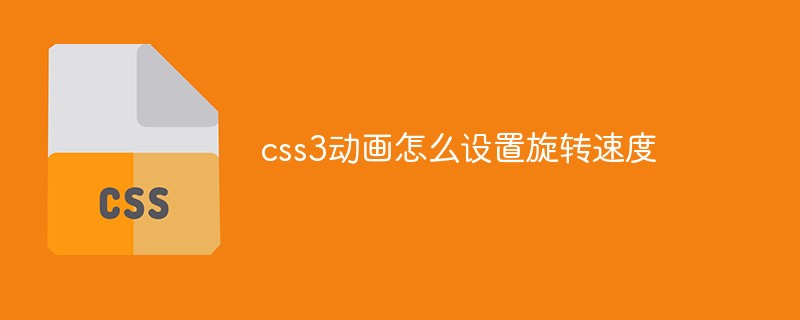 css3怎么设置动画旋转速度Apr 28, 2022 pm 04:32 PM
css3怎么设置动画旋转速度Apr 28, 2022 pm 04:32 PM在css3中,可以利用“animation-timing-function”属性设置动画旋转速度,该属性用于指定动画将如何完成一个周期,设置动画的速度曲线,语法为“元素{animation-timing-function:速度属性值;}”。
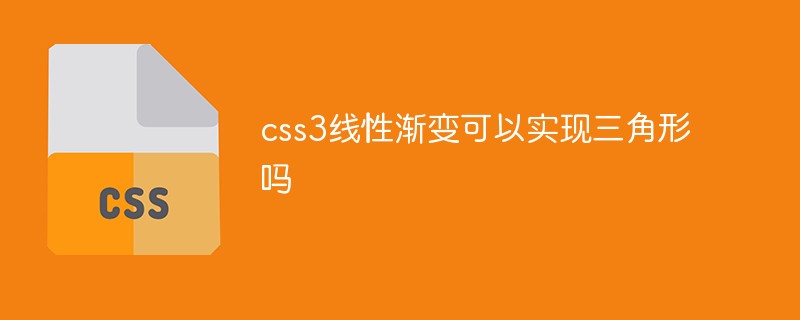 css3线性渐变可以实现三角形吗Apr 25, 2022 pm 02:47 PM
css3线性渐变可以实现三角形吗Apr 25, 2022 pm 02:47 PMcss3线性渐变可以实现三角形;只需创建一个45度的线性渐变,设置渐变色为两种固定颜色,一个是三角形的颜色,另一个为透明色即可,语法“linear-gradient(45deg,颜色值,颜色值 50%,透明色 50%,透明色 100%)”。
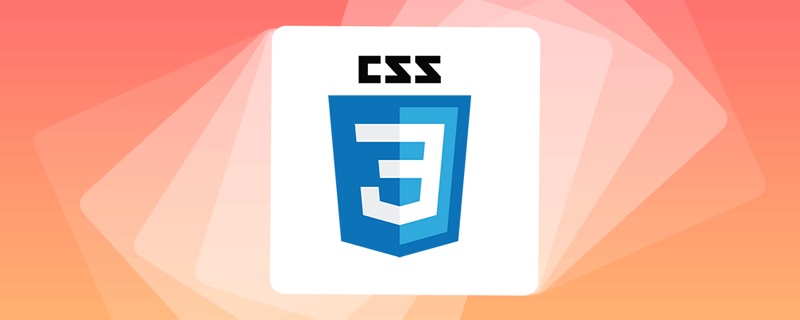 一文了解CSS3中的新特性 ::target-text 选择器Apr 12, 2022 am 11:24 AM
一文了解CSS3中的新特性 ::target-text 选择器Apr 12, 2022 am 11:24 AM本篇文章带大家一起深入了解一下CSS3中的新特性::target-text 选择器,聊聊该选择器的作用和使用方法,希望对大家有所帮助!


Hot AI Tools

Undresser.AI Undress
AI-powered app for creating realistic nude photos

AI Clothes Remover
Online AI tool for removing clothes from photos.

Undress AI Tool
Undress images for free

Clothoff.io
AI clothes remover

AI Hentai Generator
Generate AI Hentai for free.

Hot Article

Hot Tools

mPDF
mPDF is a PHP library that can generate PDF files from UTF-8 encoded HTML. The original author, Ian Back, wrote mPDF to output PDF files "on the fly" from his website and handle different languages. It is slower than original scripts like HTML2FPDF and produces larger files when using Unicode fonts, but supports CSS styles etc. and has a lot of enhancements. Supports almost all languages, including RTL (Arabic and Hebrew) and CJK (Chinese, Japanese and Korean). Supports nested block-level elements (such as P, DIV),

Notepad++7.3.1
Easy-to-use and free code editor

SAP NetWeaver Server Adapter for Eclipse
Integrate Eclipse with SAP NetWeaver application server.

VSCode Windows 64-bit Download
A free and powerful IDE editor launched by Microsoft

DVWA
Damn Vulnerable Web App (DVWA) is a PHP/MySQL web application that is very vulnerable. Its main goals are to be an aid for security professionals to test their skills and tools in a legal environment, to help web developers better understand the process of securing web applications, and to help teachers/students teach/learn in a classroom environment Web application security. The goal of DVWA is to practice some of the most common web vulnerabilities through a simple and straightforward interface, with varying degrees of difficulty. Please note that this software






